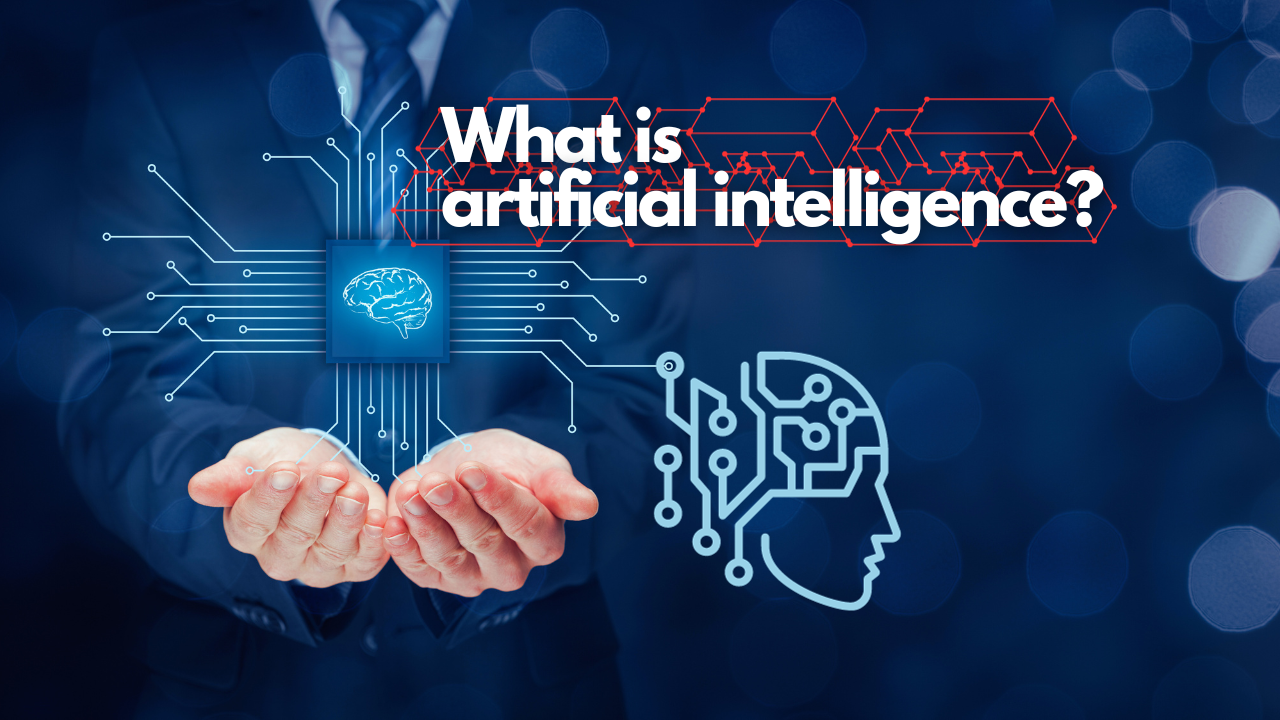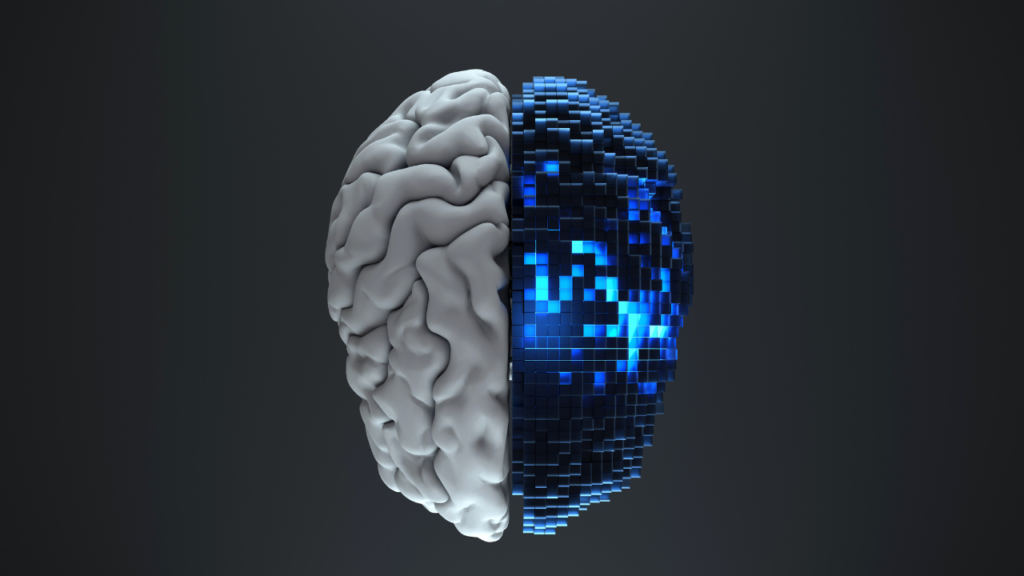
Modern AI is a system capable of perceiving its environment and taking actions to maximize its chances of achieving its objectives, as well as interpreting and analyzing data in a way that allows it to learn and adapt over time.
Artificial Intelligence (AI) was early on defined by one of its founding fathers, Marvin Minsky, as “the science of making machines do things that would require intelligence if done by humans.” While the core of this definition still holds true today, modern computer scientists take it a step further and define AI as a system capable of perceiving its environment and taking actions to maximize the likelihood of achieving its objectives. Moreover, it’s a system capable of interpreting and analyzing data in a way that enables learning and adaptation over time.
History of AI
From the Greek myth of Pygmalion to the Victorian tale of Frankenstein, humans have long been fascinated by the idea of creating an artificial being capable of thinking and acting like a real person. With the advent of computers, we came to understand that the vision of artificial intelligence would not manifest in the form of autonomous and independent entities but as a collection of connected tools and technologies capable of evolving and adapting to human needs.
The term “artificial intelligence” was coined in 1956 during a scientific conference at Dartmouth College in Hanover, New Hampshire. Since then, AI and data management have developed in a highly interdependent manner. Robust AI relies on a wealth of Big Data for meaningful analysis, while the ability to process vast amounts of data numerically requires AI. Thus, the history of AI has progressed in tandem with advancements in computational power and database technologies.
Today, enterprise systems that were once limited to handling only a few gigabytes of data can now manage terabytes and utilize AI to process real-time results and insights. Unlike the ominous human creation in Frankenstein, AI technologies are agile and responsive, designed to enhance and evolve alongside their human partners rather than replace them.
Types of AI
AI is one of the fastest-growing areas of technological development. However, even the most complex AI models today still rely on “narrow AI,” which is the most basic of the three types of AI. The other two types remain in the realm of science fiction and are not currently used in practical applications. That being said, given the rapid advancement of computing over the past 50 years, it’s challenging to predict where the future of AI will take us.
Weak Artificial Intelligence (Narrow AI)
Weak AI is one of the existing types of AI today and is also known as “Narrow AI.” While the tasks performed by Weak AI can involve complex algorithms and neural networks, they are still specific and goal-oriented. Examples of Narrow AI include facial recognition, internet searches, and autonomous vehicles. It’s termed “weak” not because it lacks scope or power but because it falls far short of possessing the human-like qualities we associate with true intelligence. Philosopher John Searle defines Weak AI as something that can be “useful for testing a hypothesis about minds, without actually being minds.”
General Artificial Intelligence (AGI)
AGI is expected to successfully perform any intellectual task that a human can accomplish. Like Narrow AI systems, AGI systems can learn from experience, identify and predict patterns, but they can go further. AGI can extrapolate this knowledge across a wide range of tasks and situations not covered by previous data or existing algorithms.
The Summit Supercomputer is one of the few supercomputers in the world that leverages AGI. It can perform 200 quadrillion calculations per second, a task that would take a human a billion years. While true AGI models may not necessarily require this level of power, they would need computational capabilities that currently exist only in supercomputers.
Super Artificial Intelligence
In theory, super artificial intelligence systems have self-awareness. They don’t just imitate or understand human behavior; they grasp it at a fundamental level. With human-like characteristics and advanced processing and analytics capabilities far surpassing ours, super artificial intelligence raises the possibility of a dystopian, science fiction future in which humans become increasingly obsolete.
It’s unlikely that people living today will experience such a world, but AI is advancing at such a rapid pace that it’s important to consider ethical guidelines and proper management in anticipation of artificial intelligence that could outperform us in nearly all measurable domains. As Stephen Hawking advised, “Due to the great potential of AI, it is important to research how to reap its benefits while avoiding potential pitfalls.”
Advantages of AI

Just a few decades ago, only a few “early adopters” were using AI in their business operations, and its potential was still somewhat theoretical. Since then, AI technologies and applications have continually progressed, adding value to businesses, with the IDC forecasting a 19.6% annual growth in 2022, reaching $432.8 billion. As AI technologies improve, becoming the next wave of innovation, their potential for human understanding and creative application also grows. Today, businesses enjoy an ever-expanding range of tangible benefits from AI-powered systems, including the following five:
- Enterprise Resilience: Long before computers existed, businesses understood the value of collecting and understanding data about their operations, market, and customers. As datasets have grown in size and complexity, the ability to accurately analyze them in a timely manner has become increasingly challenging. AI-driven solutions not only manage big data but also derive actionable insights from it. AI automates complex processes, utilizes resources more efficiently, and better predicts and adapts to disruptions (and opportunities).
- Enhanced Customer Service: AI enables businesses to personalize service offerings and interact with customers in real-time. As consumers transition from “prospects” to “customers” in the modern sales channel, they generate complex and diverse datasets. AI empowers business systems to harness this data and better serve and engage with customers.
- Informed Decision-Making: Good business leaders strive to make quick, informed decisions. The more significant a decision is, the higher the likelihood that it involves multiple, complex components and interdependencies. AI evolves human wisdom and experience by providing advanced data analysis and actionable insights for making informed decisions in real-time.
- Relevant Products and Services: Many traditional R&D models were reactive. Data analysis regarding performance and customer feedback often occurred long after a product or service hit the market. There was also no system for quickly identifying market gaps and potential opportunities. AI-optimized systems allow companies to simultaneously and in real-time examine a wide variety of datasets. This allows them to modify existing products and introduce new ones based on the most relevant and up-to-date data about the market and customers.
- Engaged Personnel: A recent Gallup survey shows that companies with highly engaged employees are up to 21% more profitable on average. AI technologies in the workplace can reduce the burden of mundane tasks and enable employees to focus on more fulfilling work. AI-powered HR technologies can also help identify when employees are anxious, tired, or bored. By personalizing well-being recommendations and assisting with task prioritization, AI can support employees and help them strike a healthy work-life balance.
AI Technologies
To be useful, AI must be applicable. Its true value is appreciated when it provides actionable insights. If we liken AI to a human brain, AI technologies are like the hands, eyes, and body movements – all the tools that allow the execution of ideas generated by the brain.
Machine Learning
Machine Learning (along with all its components) is a subset of AI. In the field of Machine Learning, algorithms are applied to various learning methods and analytical techniques, enabling the system to learn automatically and improve from experience without being explicitly programmed. For businesses, Machine Learning can be applied to any problem or goal that requires predictive results obtained through complex data analysis.
What is the difference between AI and Machine Learning? Machine Learning is a subset of AI; it couldn’t exist without it. The difference between them is a given. What’s interesting is understanding what that difference is. AI processes data to make decisions and predictions. Machine Learning algorithms enable AI not only to process this data but also to harness it for learning and becoming smarter, without the need for additional programming.
Natural Language Processing (NLP)
NLP enables machines to recognize and understand written language, voice commands, or both. It is particularly useful for translating human language into a form that algorithms can comprehend. Natural Language Generation (NLG) is a subset of NLP that allows the machine to convert digital language into natural human language. In more sophisticated applications, NLP can use context to deduce attitudes, moods, and other subjective qualities to interpret meaning more accurately. Practical applications of NLP include chatbots and digital voice assistants like Siri and Alexa.
Computer Vision
Computer vision, also known as artificial vision or digital vision, is the method by which computers understand and “see” digital images and videos, as opposed to mere recognition or categorization. Applications of computer vision use sensors and learning algorithms to extract complex contextual information that can then be used to automate or inform other processes. Computer vision can also extrapolate data for predictive purposes, essentially allowing it to “see” through walls or across streets. Self-driving cars are a prime example of computer vision in action.
Robotics
Robotics is not new; it has been in use for years, particularly in the manufacturing sector. However, without the implementation of AI, automation must be accomplished through manual programming and calibration. Any weaknesses or inefficiencies in these workflows can only be detected in hindsight or after a breakdown. Often, the human operator may never know what led to a problem or what adjustments could have been made for improved efficiency and productivity. The introduction of AI (typically through IoT sensors) significantly broadens the scope, volume, and types of robotic tasks performed. Examples of robotics in industry include order-picking robots used in large warehouses and agricultural robots that can be programmed to harvest or maintain crops at optimal times.
AI in Action

Each year, more and more businesses recognize the benefits and competitive advantages that AI solutions can bring to their operations. Some sectors, such as healthcare and banking, possess particularly vast and sensitive datasets. For them, the utility of AI was evident from its early iterations. However, due to its applicability and accessibility today, modern AI has relevant applications in nearly all business models. The following examples illustrate a few of these sectors.
AI in Healthcare
Medical datasets are among the largest, most complex, and most sensitive in the world. One of the primary goals of AI in healthcare is to leverage this data to establish relationships between diagnoses, treatment protocols, and patient outcomes. Additionally, healthcare institutions are turning to AI solutions to support other operational initiatives and areas. These may include employee satisfaction and optimization, patient satisfaction, and cost reduction, among others.
AI in Banking
Banks and financial institutions have an increased need for security, compliance, and transactional speed, and as such, they were among the early adopters of AI technologies. Features such as AI-driven robots, digital payment advisors, and biometric fraud detection mechanisms contribute to improving efficiency and customer service, as well as reducing risks and fraud. Learn how banks manage end-to-end services through digitalization and intelligent technologies.
AI in Manufacturing
When terminals and machines are connected to send and receive data through a central system, they form an IoT network. AI not only processes this information but also uses it to anticipate opportunities and disruptions, and to automate the best tasks and workflows to deal with them. In smart factories, this extends to on-demand production protocols for 3D printers and virtual inventories. Find out how Adidas uses Machine Learning to deliver custom sneakers in just 24 hours.
AI in Retail
The pandemic had a significant impact on shopping habits, resulting in a substantial increase in online purchases compared to the same period in the previous year. This has contributed to a highly competitive and rapidly evolving climate for retailers. Online shoppers use a large number of touchpoints and generate larger quantities of complex and unstructured datasets than ever before. To better understand and harness this data, retailers are turning to AI solutions that can process and analyze disparate datasets to provide useful insights and real-time interactions with customers.
Ethical Considerations and Challenges in AI
In 1948, computing pioneer Alan Turing stated, “A computer would deserve to be called intelligent if it could deceive a human into believing that it was human.” Even though the processing speed and analytical power of a modern AI-driven computer would have seemed incredible to Mr. Turing, he would likely have understood the ethical dilemmas presented by this level of power. The more AI is able to understand and mimic us, the more human it appears. And as we generate increasing amounts of personal data through digital channels, we must increasingly be able to trust the AI applications underpinning many of our daily activities. Below are some examples of ethical challenges that business leaders need to be aware of and monitor.
Ethical Use of Customer Data
In the 2020s, the majority of information is shared and collected through digital, connected channels by businesses or individuals. At the start of 2020, there were over 3.5 billion smartphones in the world, all sharing vast amounts of data, from GPS location to personal details and user preferences, through social networks and search behavior. As companies gain broader access to their customers’ personal information, it becomes extremely important to establish evolving guidelines and protocols to protect privacy and reduce risks.
AI Biases
Biases can seep into an AI system due to human bias in programming its algorithms or due to systemic biases that can be propagated through erroneous assumptions in the Machine Learning process. In the first case, it’s easy to understand how this can happen. But in the second case, bias can be more challenging to detect and avoid. The U.S. healthcare system provided a well-known example of AI bias. AI applications were used to assign care standards. The algorithm learned that certain demographic groups were less likely to afford their care, so it erroneously extrapolated that this group would be less entitled to care. After this unfortunate discovery, UC Berkeley computer scientists worked with developers to modify algorithmic variables, reducing the bias by 84%.
AI Transparency and Explainable AI
Transparency in AI refers to the ability to determine how and why an algorithm arrived at a specific conclusion or decision. AI and Machine Learning algorithms that illuminate the results, and the results themselves, are often so complex that they exceed human understanding. Such algorithms are known as “black box” models. For businesses, it is crucial to ensure that data models are accurate, unbiased, and can be explained and examined from the outside. Especially in areas like aviation or medicine, where human lives are at stake. Therefore, humans who use this data should take data governance initiatives very seriously.
Deepfakes and Fake News
The term “deepfake” is a portmanteau of “deep learning” and “fake.” It’s a technique that uses artificial intelligence and Machine Learning to superimpose one person’s face onto another’s body in a video, with such precision that the deception is nearly impossible to detect. In its innocent form, it can lead to astonishing visual effects, like a digitally rejuvenated Robert De Niro and Joe Pesci in the film “The Irishman.” Unfortunately, its most common use is to create credible fake news or to make celebrities appear in explicit or compromising videos they never originally appeared in.





